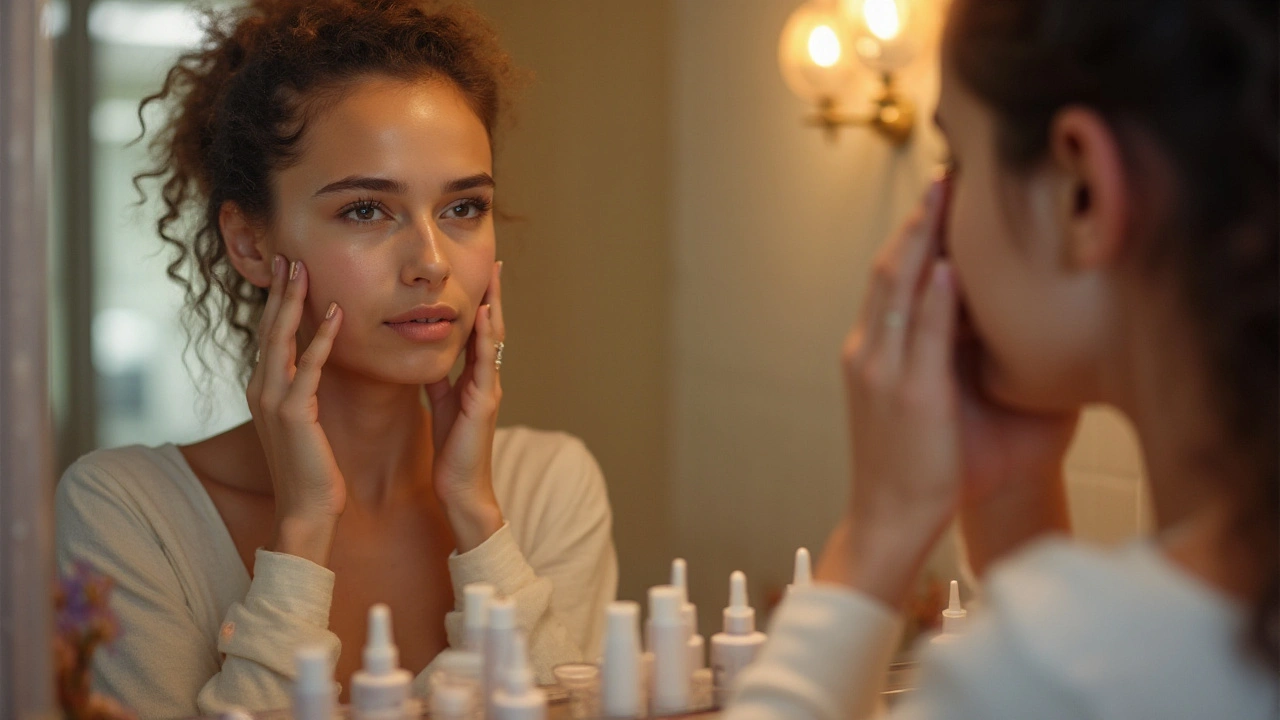Retinoids – How They Work, What They’re Good For, and Safe Usage Tips
If you’ve ever Googled “best acne cream” or “anti‑aging serum,” chances are retinoids showed up in the results. They’re a group of vitamin A derivatives that speed up skin cell turnover, which can clear breakouts, smooth fine lines, and even improve texture. Below is a no‑fluff guide to help you decide if a retinoid fits your routine and how to use it without turning your face into a red map.
What Are Retinoids?
Retinoids are chemicals that mimic the action of natural vitamin A in the skin. When applied, they tell skin cells to shed old layers faster and produce new ones more efficiently. This process reduces clogged pores, fades hyperpigmentation, and stimulates collagen production – the same reasons dermatologists love them for both acne and aging.
Not every retinoid is created equal. Over‑the‑counter (OTC) options like retinol are milder, while prescription formulas such as tretinoin, adapalene, and isotretinoin pack a stronger punch. The strength you need depends on your skin concerns, tolerance, and whether a doctor has prescribed it.
Types, Benefits, and How to Use Them Safely
Retinol (OTC): Ideal for beginners or those with sensitive skin. It’s less irritating but still effective for mild acne, fine lines, and uneven tone when used consistently.
Tretinoin (Retin‑A): A prescription staple for moderate to severe acne and deeper wrinkles. Expect a stronger reaction – peeling, redness, or dryness – especially in the first few weeks.
Adapalene (Differin): Originally prescription‑only, now also sold OTC in lower strengths. It’s great for stubborn acne because it’s less likely to cause severe irritation than tretinoin.
Isotretinoin (Accutane): The heavyweight oral retinoid reserved for severe cystic acne that hasn’t responded to other treatments. It requires close medical supervision due to serious side effects, including birth defects.
**How to use them right:**
- Start slow – apply a pea‑sized amount every other night and watch how your skin reacts.
- Always pair with a gentle cleanser and a moisturizer. A barrier cream helps lock in moisture and calm irritation.
- Sunscreen is non‑negotiable. Retinoids make you more UV‑sensitive, so use SPF 30 or higher daily.
- Avoid mixing with other strong actives (like benzoyl peroxide or AHAs) at first; they can overload your skin and cause burning.
Common side effects include dryness, peeling, and a brief period of increased breakouts – often called “purging.” These usually fade after 2‑4 weeks as your skin adjusts. If you experience severe redness, swelling, or blistering, stop using the product and talk to a dermatologist.
People who should steer clear or get professional guidance include pregnant or nursing women (especially with oral retinoids), anyone on certain acne antibiotics that can interact, and individuals with eczema‑prone skin who may not tolerate strong formulas.
In short, retinoids are powerful tools for clearer, smoother skin when you respect their potency. Begin with the lowest effective strength, keep your routine simple, protect against sun, and give your skin time to adapt. If you follow these basics, you’ll likely see fewer breakouts, softer lines, and a healthier glow without the drama.
This article explores six effective alternatives to Isofair for treating acne. From Retinoids and Benzoyl Peroxide to natural solutions like Tea Tree Oil, we break down the pros and cons of each. Learn about skincare kits like Paula's Choice and Murad Acne Control and find the best fit for your needs. Consider factors such as skin type, potential irritation, and product formulation in making an informed choice.
Jan, 6 2025

